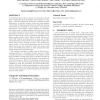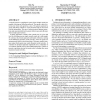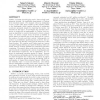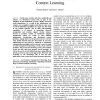32 search results - page 3 / 7 » When is social computation better than the sum of its parts |
SIGECOM
2006
ACM
13 years 12 months ago
2006
ACM
In traditional game theory, players are typically endowed with exogenously given knowledge of the structure of the game—either full omniscient knowledge or partial but fixed in...
ATAL
2003
Springer
13 years 11 months ago
2003
Springer
A referral system is a multiagent system whose member agents are capable of giving and following referrals. The specific cases of interest arise where each agent has a user. The ...
WWW
2010
ACM
14 years 29 days ago
2010
ACM
Twitter, a popular microblogging service, has received much attention recently. An important characteristic of Twitter is its real-time nature. For example, when an earthquake occ...
ICCS
2001
Springer
13 years 10 months ago
2001
Springer
This paper surveys and places into perspective a number of results concerning the D-BSP (Decomposable Bulk Synchronous Parallel) model of computation, a variant of the popular BSP ...
CORR
2004
Springer
13 years 5 months ago
2004
Springer
Social insect societies and more specifically ant colonies, are distributed systems that, in spite of the simplicity of their individuals, present a highly structured social organi...




